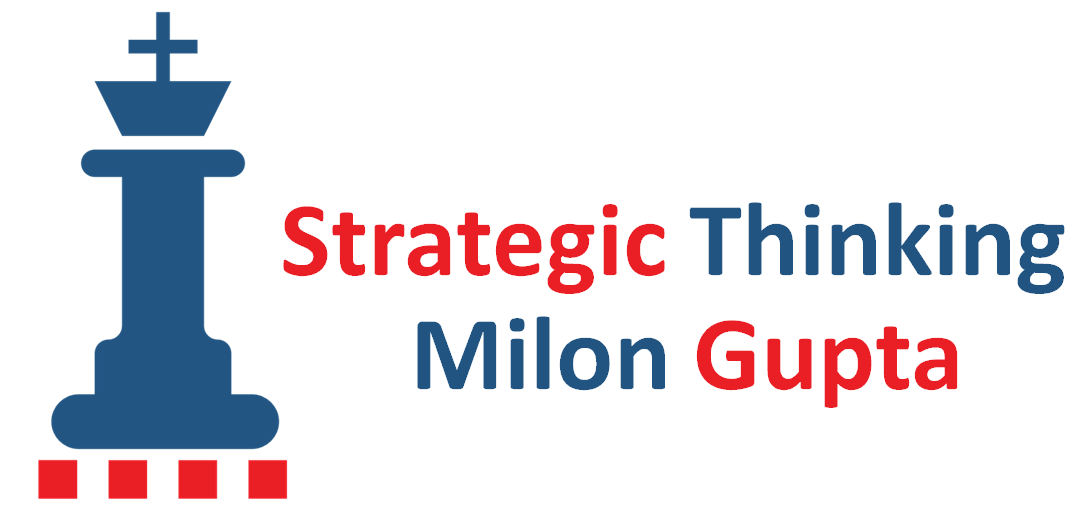The German economy is in recession. And German SMEs are right in the middle of it. In addition to short-term economic causes for the slump, there are also longer-term structural reasons. SMEs are therefore facing growing challenges in the short and medium term that require consistent strategic action.
The German Institute for SME Research (Institut für Mittelstandsforschung – IfM) in Bonn determines annually which challenges these are from the perspective of SMEs. For the SME Future Panel 2023 (Zukunftspanel Mittelstand 2023), the IfM surveyed 1,109 entrepreneurs on the challenges they expect to face in the future. The results contain a lot of expected things, but also a few surprises, as the following diagram shows.
Let’s take a closer look at the three most frequently mentioned fields of action.
Acute shortage of skilled workers
 The shortage of skilled workers is becoming an ever-growing problem for SMEs. For the third time in a row, this topic has taken the top spot by far in the SME Future Panel. The demographic development with all its consequences for the world of work is therefore the dominant topic. More companies surveyed than ever before (44%) rated this topic as challenging.
The shortage of skilled workers is becoming an ever-growing problem for SMEs. For the third time in a row, this topic has taken the top spot by far in the SME Future Panel. The demographic development with all its consequences for the world of work is therefore the dominant topic. More companies surveyed than ever before (44%) rated this topic as challenging.
Younger companies with a market presence of up to 10 years and companies with a currently good earnings situation are particularly concerned about the issue. Fast-growing companies in particular are often unable to process all orders due to a lack of suitable skilled workers. Companies are also very concerned about the ageing workforce and the imminent departure of employees without sufficient successors.
Those surveyed do not see any simple solutions to this problem. Attracting the next generation of skilled workers through training is proving difficult, as skilled trades companies in particular are often unable to find suitable applicants for vacant training positions. In the view of the interviewees, increasing the attractiveness of employers can hardly help either.
In my view, the problem cannot be solved in the short and medium term without an increased influx of young foreign talent. In addition, productivity gains through more effective management and digitalization could be interesting options for some companies to compensate for staffing gaps. Or to put it another way: doing more with fewer people. However, this should not lead to more overtime and burnout. Instead, it is about greater effectiveness and automation.
After thoroughly considering all available options, company management should decide as soon as possible on its medium-term HR strategy what the relatively best solution for the company in question might be, if it has not already done so.
Increasing competitive pressure
 Around 30 percent of the companies surveyed consider increased competitive pressure to be a challenge. Most of them link this directly to increased cost pressure. Companies in all sectors are confronted with cost increases due to higher prices for raw materials, materials, energy, production and personnel.
Around 30 percent of the companies surveyed consider increased competitive pressure to be a challenge. Most of them link this directly to increased cost pressure. Companies in all sectors are confronted with cost increases due to higher prices for raw materials, materials, energy, production and personnel.
These price increases are perceived by companies as so severe that they see their national and international competitiveness at risk. China and low-wage countries are named as the main competitors.
Interestingly, only a few companies believe in cost-independent ways to increase their competitiveness. These include, for example, acquiring new customers, increasing sales, expanding markets or opening up new business areas. These could be strategic opportunities for companies to improve their market position and thus cushion the competitive pressure of low-cost providers from abroad. However, this requires a willingness to systematically consider one’s own strategic options and to make and consistently implement strategic decisions on this basis.
Expensive energy supply
 Just under a fifth of respondents (19 percent) consider the cost and security of energy supply to be a key problem and area for action. As in 2022, SMEs see themselves as being more affected by the rise in energy prices than non-SMEs.
Just under a fifth of respondents (19 percent) consider the cost and security of energy supply to be a key problem and area for action. As in 2022, SMEs see themselves as being more affected by the rise in energy prices than non-SMEs.
Medium-sized companies see only limited opportunities to cushion the pressure of high energy prices through further energy-saving measures or process improvements. They see not only the price, but also the energy policy as a challenge. Above all, companies criticize the fact that they have no clarity about the structure of energy policy. They perceive the increasing administrative requirements associated with energy policy measures as disproportionate. Some companies are considering moving abroad out of frustration with high energy costs and German energy policy.
Here, too, it is important to carefully weigh up the strategic options. For many companies, energy costs are not a decisive competitive factor. In addition, some companies still have untapped potential for energy savings.
Top problem areas – top fields of action?
In view of these top 3 issues, I ask myself whether all the problem areas mentioned are really the top areas of action for the majority of SMEs. In this context, it gives me pause for thought that only just under 10 percent of respondents named digitalization as a relevant topic. Digitization in SMEs still has a lot of room for improvement. And in the medium term, it can also contribute to solving the top challenge of “skills shortages” through greater automation and more efficient processes. It is also interesting to note that the topic of “sustainability” has slipped from second to fourth place compared to 2022. Only 15 percent of the companies surveyed still consider this to be a relevant topic.
My impression is that, given the abundance of challenges, the topics with an acute pain factor receive a high level of attention. That is understandable. However, it also harbors the risk of acting strategically short-sighted.
Identify strategically relevant top areas of action
If you are the managing director of a medium-sized company, I have a suggestion for you:
- in the first step, identify the three most important acute problem areas in your company.
- then, in the second step, consider what the three most important fields of action could be in which you should take action in the medium term in order to maintain and increase your company’s competitiveness.
- in the third step, define goals and measures to solve short-term problems and increase your competitiveness in the medium term.
If you would like to discuss this, please contact me to arrange a free introductory meeting.

